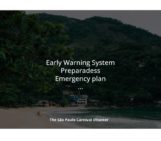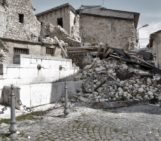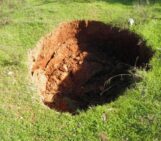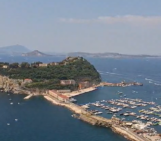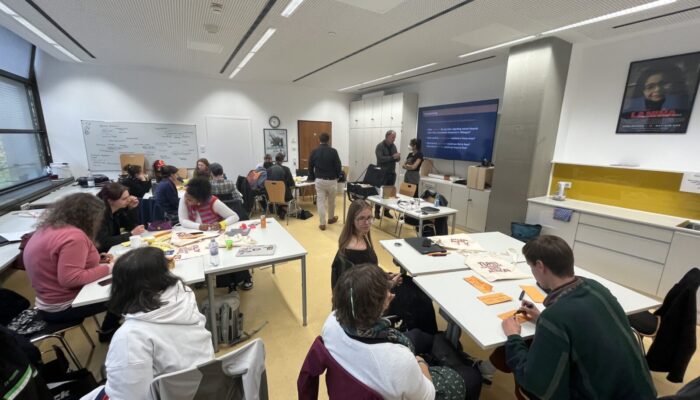
This week, we turn our attention to education and collaboration in Disaster Risk Reduction (DRR). Dr. Solmaz Mohadjer has been leading an innovative Service-Learning course that brings students together with non-profit organisations working at the forefront of risk reduction. The course not only introduces students to the complexities of disasters and resilience but also creates space for dialogue and partnership between academia and practice. We spoke with Solmaz to learn more about the vision behind the course, its impact on students and organisations, and where such initiatives might lead in the future.
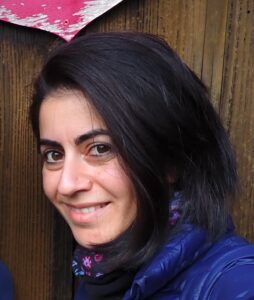
1) Hello Solmaz, it’s a great pleasure to have you with us today. Could you elaborate a bit on your background and current position?
Hello Paulo, it’s my pleasure to be here with you. I’m a lecturer in the Transdisciplinary Course Programme at the University of Tübingen in Germany. My main responsibility is to create and teach courses that integrate natural and social sciences approaches and perspectives to address societal issues. Because of my background in natural hazards research and communication, I focus mainly on topics like disaster risk reduction, uncertainties in science, and risk communication. These topics are complex and multidimensional, and cannot be fully addressed without input from multiple fields of expertise (academic and non-academic). That makes them a good fitfor our transdisciplinary course programme, which is open to students from all disciplines (not just geosciences), and includes experiential learning that allows students to put academic knowledge into practice to address community needs.
2) Could you tell us a little about the Service-Learning course on Disaster Risk Reduction (DRR)?
During the summer 2025 semester, I had the opportunity to teach a Service-Learning course called ‘Breaking the Cycle of Disaster, Response, Recovery and Repeat’. The idea I wanted to get across was that hazards do not have to turn into disasters – hazards become disasters when risks are ignored or poorly understood. To break the disaster cycle, we therefore focused on risk management across all of society (not just governments).
“… hazards do not have to turn into disasters – hazards become disasters when risks are ignored or poorly understood”
To do this, students explored and discussed key factors that contribute to effective disaster risk reduction, including understanding the interrelationships between natural hazards, forming effective partnerships, listening to communities, building cultural awareness, knowledge and sensitivity, and ensuring equitable access to information. Students explored these factors by examining case studies from around the world, and through direct interactions with non-profit organisations engaged in DRR. While the former focused on ‘Learning’ what effective DRR looks like, the latter provided a means for students to engage in ‘Service’ by sharing the insights they gained from interacting with non-profit DRR organisations with the wider natural hazard science community (see blog interviews).
3) The course connects students with non-profit organisations working on DRR. Why was it important for you to include this real-world collaboration, and what do you hope students will take away from it?
I wanted my students to reflect critically on DRR and disaster risk management practices. It’s one thing to be familiar with different concepts, principles and frameworks – it’s another to know what actually works (or doesn’t) in the field. By interacting and learning directly from those who practise DRR (outside of the classroom), students had a chance to connect their academic learning with real-world practice, and share their insights with the wider natural hazard science community. This reflection, which considers both an academic and a personal perspective, is also a central element of the Service-Learning methodology, which links service and learning. Our intention was to ignite discussion on how researchers and practitioners can strengthen their engagement in DRR.
4) From your perspective, what role do Service-Learning and partnerships with NGOs play in building stronger, more inclusive approaches to disaster risk reduction?
We are all vulnerable to disasters, but disaster risk is never shared equally. Inclusive DRR means making room for everybody, ensuring that all voices, knowledge, experiences and needs are included. This includes academic institutions and universities that help with implementing DRR work, including critical research, education and capacity-development efforts. While universities often cover the scientific/technical aspects of DRR, they can also play a critical role in promoting DRR education.
“Inclusive DRR means making room for everybody, ensuring that all voices, knowledge, experiences and needs are included”
In this context, Service-Learning is an effective (and more inclusive) way of teaching and learning about disaster risk. It takes lecturers and students outside of the classroom and connects them with the local and international communities so that they can learn from each other. While DRR practitioners benefit from students’ diverse perspectives and increased visibility of their work, students gain practical experience and insights into DRR professional fields and increase their civic engagement.
5) What has been the most surprising or rewarding outcome of running this course so far (either for you as an instructor, or for the students and organisations involved)?
I was touched by the excitement and the pride my students expressed when their final projects were published on the NH Division Blog. Writing a blog as the final project was a new format I was trying for the first time, so I was a bit worried about how this would go. I wanted students to create something that is meaningful to them and also useful to the wider natural hazard community. So I asked them to do an interview with a non-profit organisation working in DRR and write a blog about it. Publishing their blog was optional. At the end, this format worked out well. Most students were eager to publish their work, and were able to realise this with my guidance and the assistance of the NH Division Blog editors. One student described this experience as “one of the most impactful courses of my undergraduate studies”. Remarks like this made this effort worthwhile. I hope the natural hazard community finds these interviews insightful.
6) Looking ahead, how do you see this type of initiative developing?
Given the inter- and transdisciplinary nature of DRR, I believe DRR-related courses are relevant to students from many disciplines (not just geosciences). At the University of Tübingen, we offer such courses to all bachelor’s students through our Transdisciplinary Course Program – but we are also exploring other options like integrating transdisciplinary courses into specific degree programmes.
In terms of Service-Learning, this approach is an excellent fit for teaching DRR topics. Just as with other complex societal issues, disaster risk can be tackled best by working together. Service-Learning allows for exactly this! It brings together students, lecturers, and community partners to share and learn from each other. In this win-win collaboration, all three groups work together on equal footing to discuss and explore solutions to the complex challenges of implementing DRR work. Service-Learning is also a great way to highlight the crucial roles of non-profits in disaster preparedness, response and recovery, which can sometimes be overlooked.
For these reasons, I encourage the natural hazard community to incorporate Service-Learning into their educational and training activities, both within and outside their academic institutions. This approach is well established, and there are many resources out there to help you get started.
Edited by Asimina Voskaki and Hedieh Soltanpour

